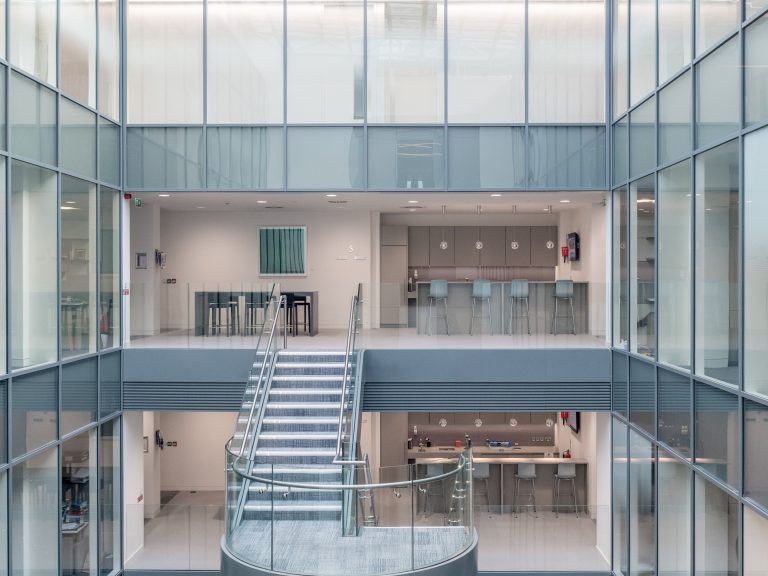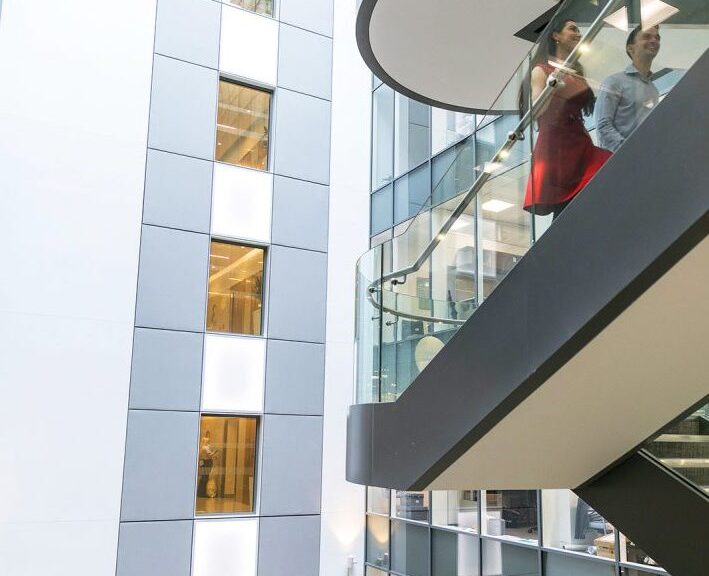From 1st March 2021 the domestic VAT reverse charge (the “Reverse Charge”) will be introduced in the UK. What impact will this have on the supplies of building and construction services?
The introduction of the Reverse Charge will have a significant impact on those that supply building and construction services. HM Revenue & Customs (“HMRC”) have published guidance on the Reverse Charge to help businesses that will be affected prepare. The introduction of the Reverse Charge was previously delayed in 2019 due to concerns businesses were not prepared to deal with the change and a further delay in 2020 as a result of Covid-19. This note outlines the scope and effect of the Reverse Charge specifically for the building and construction services. If the Reverse Charge does not apply you should continue to follow the normal VAT rules.
What is the Reverse Charge?
The Reverse Charge is a mechanism to prevent the avoidance of VAT by suppliers who charge and collect VAT from the recipient but fail to account for the VAT to HMRC. The Reverse Charge changes the responsibility for accounting to HMRC for VAT from the supplier to the recipient of the supply. The recipient is now responsible for directly paying HMRC as opposed to paying the supplier.
What services are affected by the Reverse Charge?
In order to determine whether the Reverse Charge will apply to your services, the following conditions must be met. It must be a taxable person who supplies construction services which are not excluded. The recipient must be a taxable person at the time the supply is made, and the supply must be made in connection with the recipient’s business. If the supplies are to a business that is not VAT registered or to customers for non-business use these are not caught by the Reverse Charge.
In addition, the supplies must be taxable at the standard or reduced rates. Zero-rated supplies of goods or services are outside the scope of the Reverse Charge. Supplies that are eligible for zero-rating are set out in Schedule 8 to VAT Act 1994 (the “1994 Act”) including; the supply of any services (other than an architect, surveyor, or any person acting as a consultant or in a supervisory capacity) related to the construction of a building; and associated supplies of building materials incorporated into a building (or its site) during construction of a building either designed as a dwelling (or number of dwellings) or intended for use solely for a relevant residential purpose.
If the above conditions are met, the Reverse Charge will apply if your services falls under one of the following:
- Constructing, altering, repairing, extending, demolishing or dismantling buildings or structures (whether permanent or not), including offshore installation services;
- Constructing, altering, repairing, extending, demolishing of any works forming, or planned to form, part of the land, including (in particular) walls, roadworks, power lines, electronic communications equipment, aircraft runways, railways, inland waterways, docks and harbours, pipelines, reservoirs, water mains, wells, sewers, industrial plant and installations for purposes of land drainage, coast protection or defence;
- Installing heating, lighting, air-conditioning, ventilation, power supply, drainage, sanitation, water supply or fire protection systems in any building or structure;
- Internal cleaning of buildings and structures, so far as carried out in the course of their construction, alteration, repair, extension or restoration;
- Painting or decorating the inside or the external surfaces of any building or structure;
- Services which form an integral part of, or are part of the preparation or completion of the services described above – including site clearance, earth-moving, excavation, tunnelling and boring, laying of foundations, erection of scaffolding, site restoration, landscaping and the provision of roadways and other access works.
If you sell building and construction services, the Reverse Charge must be used if your customer is registered for VAT in the UK, payment for the supply is reported within the Construction Industry Scheme (the “CIS”), the services you supply are standard or reduced rated, you’re not an employment business supplying either staff or workers, or both and your customer has not given written confirmation that they are an end user or an intermediary supplier. HMRC have confirmed that end users are consumers and final customers. Notification of end user status can be made on paper and sent by post, electronically in an email or in a contract. An example of the wording that may be used as written notification includes;
“We are an end user for the purposes of section 55A of the 1994 Act reverse charge for building and construction services. Please issue us with a normal VAT invoice, with VAT charged at the appropriate rate. We will not account for the reverse charge.”
It is crucial that this written confirmation of end-user status is provided as failure to do so means the Reverse Charge will apply.
Goods (materials) supplied within construction services, which are treated as part of a single supply of services, are also subject to the Reverse Charge. This is an extension of the government’s original proposal, which was to apply the Reverse Charge to labour-only supplies, and will bring many more construction businesses within the scope of the Reverse Charge. HMRC’s position is that if a customer enters into separate contracts with the same supplier for works and materials, and if they are provided at the same time and on the same site, this is a single supply for VAT purposes and the Reverse Charge applies to both contracts. The Reverse Charge does not apply to goods supplied on hire without labour.
However, HMRC in 2020 introduced the concept of a 5% disregard rule which appears to operate in this scenario where, if the value of the supply subject to the Reverse Charge is 5% or less than the total consideration, the Reverse Charge would not apply. Suppliers must calculate the 5% by value of the supplies. They should keep careful and complete records to evidence that calculation if they rely on the 5% disregard rule. As the 5% disregard rule has no statutory basis, it appears to be voluntary; meaning that if a business does not wish to rely on it, they can apply the Reverse Charge as normal to all the services supplied.
What services are excluded from the Reverse Charge?
The Reverse Charge does not apply to the following services, when supplied on their own:
- Drilling for, or extracting, oil or natural gas;
- Extracting minerals (using underground or surface working) and tunnelling, boring, or construction of underground works, for this purpose;
- Manufacturing components for heating, lighting, air-conditioning, ventilation, power supply, drainage, sanitation, water supply or fire protection systems, or delivering any of these to site;
- The professional work of architects or surveyors, or of building, engineering, interior or exterior decoration and landscape consultants;
- Making, installing and repairing art works such as sculptures, murals and other items that are purely artistic signwriting and erecting, installing and repairing signboards and advertisements;
- Installing seating, blinds and shutters;
- Installing security systems, including burglar alarms, closed circuit television and public address systems.
What impact will this have for building and construction services?
A significant impact will be on how businesses within the construction sector manage their cash flow. The Reverse Charge may also mean your business will make net repayment claims to HMRC, as you no longer receive VAT on your sales. To manage this change you can apply to move to monthly returns using your online VAT account. If you are a sub-contractor you should also be aware that your customers will no longer be paying you VAT, this will obviously have a reduction on the gross value of payments coming into your business. You will need to prepare for the impact on your day-to-day cash flow.
How do I prepare for the introduction of the Reverse Charge?
You should check if your customer has a valid VAT number, check your customer’s CIS registration, review your contracts to decide if the Reverse Charge will apply and tell your customers of this change. Ask your customer to confirm whether they are an end user or intermediary supplier. Find out how to record the Reverse Charge in your accounts, making sure your invoices show the Reverse Charge applies, in order to ensure that customers will no longer pay you any VAT. Following these steps will help you to ensure you are clear when the Reverse Charge applies.
In order to adapt to this change, it is important to ensure your accounting systems and software can deal with the Reverse Charge. Make sure your staff who are responsible for VAT accounting are familiar with the Reverse Charge and how the change will affect the everyday business within the construction sector.
What if I fail to comply with the Reverse Charge?
HMRC understands that implementing the Reverse Charge may cause some difficulties and they have stated they will be applying a light touch in dealing with any errors made in the first 6 months of the new legislation. Any errors should be corrected as soon as possible, as the longer under declared or overcharged sums remain outstanding the more difficult it may be to correct or recover them. HMRC officers may assess for errors during the light touch period, but penalties will only be considered if you are deliberately taking advantage of the measure by not accounting for it correctly.
If you require any further information or advice on how to prepare for the pending introduction of the Reverse Charge on the 1st March 2021, please contact the Construction Team at Arthur Cox who will be pleased to assist.




